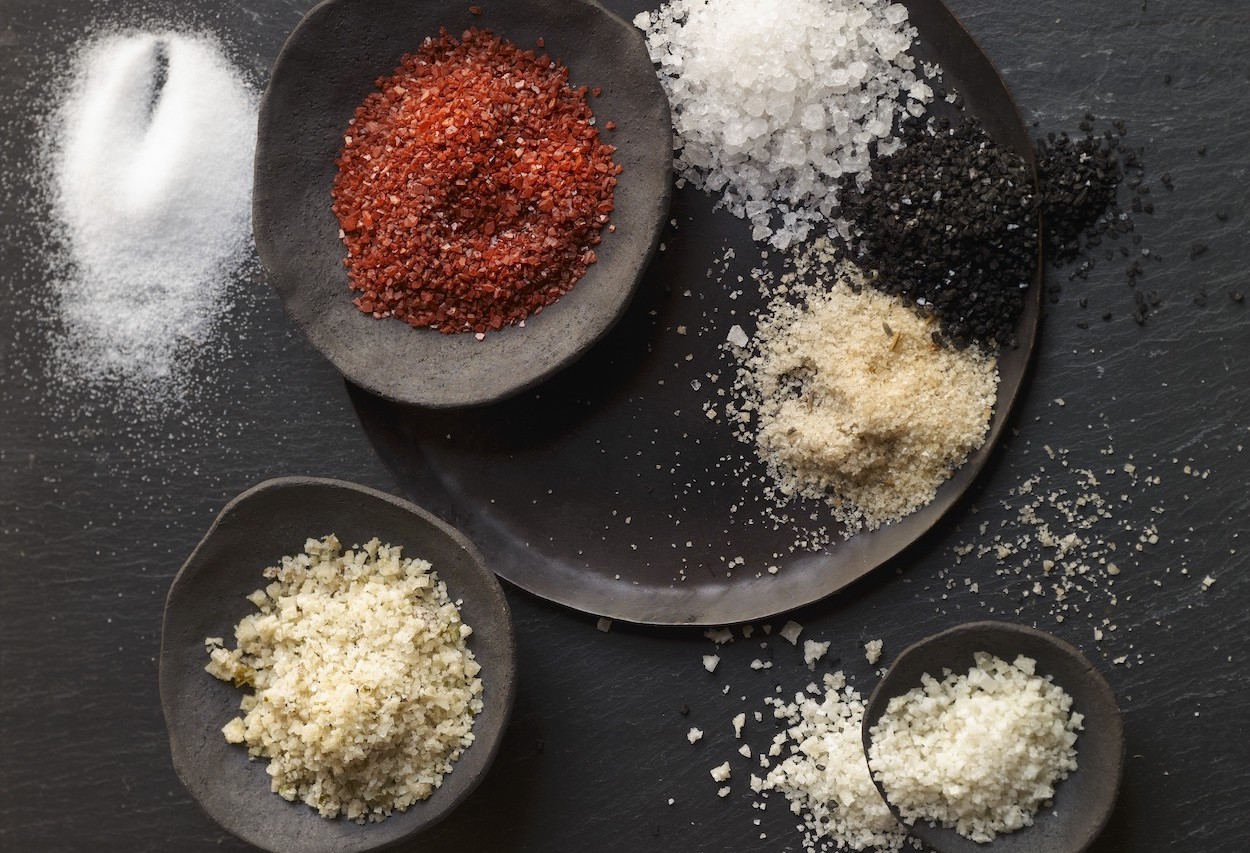
With the ability to bring out the inherent, muted flavours in food, salt is added to most recipes — including sweets — to smooth everything out. Without it, home cooking can be bland and unappetizing, but getting in the habit of adding too much salt to foods is linked to high blood pressure and cardiovascular irregularities. While definitely less health-threatening, large amounts of salt can cause water retention, making your pants feel a bit snugger and leaving your skin looking dehydrated. However, salt is necessary for our bodies to function correctly, maintaining normal heart rhythm and nerve function — without it, complications arise.

How Much Salt Should I Eat Per Day?
Eating too little salt is generally not a concern for most, with the advent of packaged and convenience foods. Enjoying a diet rich in whole, unprocessed, naturally low-sodium foods is the most nutritious option, allowing you to add salt to taste when cooking, reducing the risk of overdoing your daily recommended amount. Current Health Canada guidelines advocate most healthy adults eat approximately 1500 mg of sodium per day, though most are consuming more than double that.
Sodium and chlorine are the two elements that make up salt, making all types of salt sources of these essential compounds, adding another layer of confusion to the mix, as most are indistinguishable to the palate from one to the next. Whether purchasing at a grocery store or specialty food shop, salt’s diverse price range, wide-spanning varieties and nutritional profile can leave you scratching your head.
Related: Forget Salt: I Cooked With 6 Trending Spices to See if They’re Actually Worth the Hype
What is Sea Salt?
Sea salt is derived from its eponymous source (the sea), originating from any number of regions around the world. Its clean, pure taste is adored by cooks and is available in coarse and fine options; the former is well suited for garnishing, while the latter is ideal for cooking food and baking thanks to its ability to dissolve. Coming in white, grey, red, pink and black, the colour you choose is a matter of personal preference and price point.
Regarding health benefits, sea salt is plentiful in trace minerals due to its marine derivation, delivering many of the same nutritional compounds that make superfood seaweed so nutritious. The healthiest forms of sea salt are the least refined with no added preservatives (which can mean clumping in the fine variety). Pink Himalayan salt is touted by healthy home cooks as the ultimate mineral-rich seasoning, said to be the purest of the sea salt family.
What is Ground Salt?
The most common ground salt (taken from the ground, not the sea) is table salt, a cheap and common seasoning that can be found in most home kitchens. A more refined version of salt, table salt has added iodine, a trace mineral necessary for correct thyroid function, thyroid cancer-prevention and proper mental development and maintenance. Iodine deficiency is rare, and the mineral can be accessed from vegetables, seaweeds, milk, wild fish, eggs, and unrefined sea salts.
Related: The Easiest Ways to Save Over-Salted Food
What is Kosher Salt?
Kosher salt tastes slightly less salty than table salt or sea salts (though it can be derived by either the sea or ground) due to its ability to dissolve more quickly on the tongue. Anticaking agents can be added to kosher salt, but can be purchased pure, too. Kosher salt makes it easy to grab a pinch and clings to food well, making it a favourite amongst chefs and home cooks alike.
What are Gourmet Salts and How Do I Use Them?
Gourmet salts run the gamut in terms of price and taste. “Plain” finishing and naturally flavoured finishing salts can be a unique addition to any dish. They carry a heftier price tag than a basic sea salt or ground salt, but are used in moderate amounts, potentially lasting for years.
Fleur de sel (“flower of salt” in French) is a readily available sea salt ideal for garnishing (both sweet and savoury foods), and, while still expensive, carries a softer price tag than many other gourmet options. Fleur de sel’s pure nature, free of additives, preservatives or anticaking agents, will provide the same trace minerals as other salts, with a cleaner taste.
Smoked salts are just that; smoked. This gourmet treat is to be used sparingly on meats, fish, eggs and vegetables for a truly unique taste. Flavoured salts can include any number of natural additions, from lemon peel to lavender to dried truffles to chili, and can be purchased or made at home.
Are Salt Alternatives Healthier?
Like sugar, salt has low-sodium alternatives that are generally comprised of chemical sources. Some find the strange taste of chemically derived salt alternatives to be off-putting. Salt alternatives can adversely interact with some medications and health conditions, so check with a doctor before reaching for this product.
Natural, chemical-free options such as dulse (seaweed) granules are marketed as a salt substitute, containing the same range of minerals as “pure” sea salt. The taste of dulse granules is decidedly sea-like, so use judiciously when adding this salt substitute to a recipe.
No matter which salt you choose, the small amount used contributes little nutritional value to your overall diet, making your selection a matter of personal taste. If you’re concerned about increasing the mineral content in your diet, focus on consuming more grains, vegetables, fruits, dairy, nuts and lean protein — salt shouldn’t be used as a supplement or alternative for the nutrition these foods contain. Reducing your total salt intake to the recommended daily intake (1500 mg) can be accomplished with a diet low in unprocessed foods and yes, a pinch or two of salt — any type you like.
Fore more inspiration and alternatives, these healthy salt substitutes are the real deal.
Published January 5, 2017, Updated April 18, 2021
Photo courtesy of Getty Images
